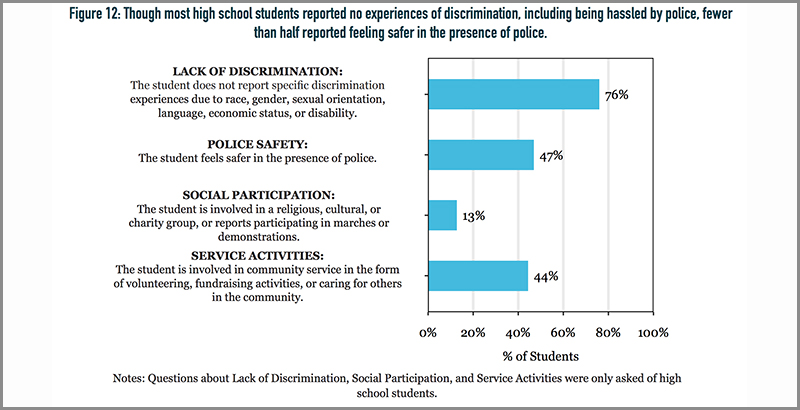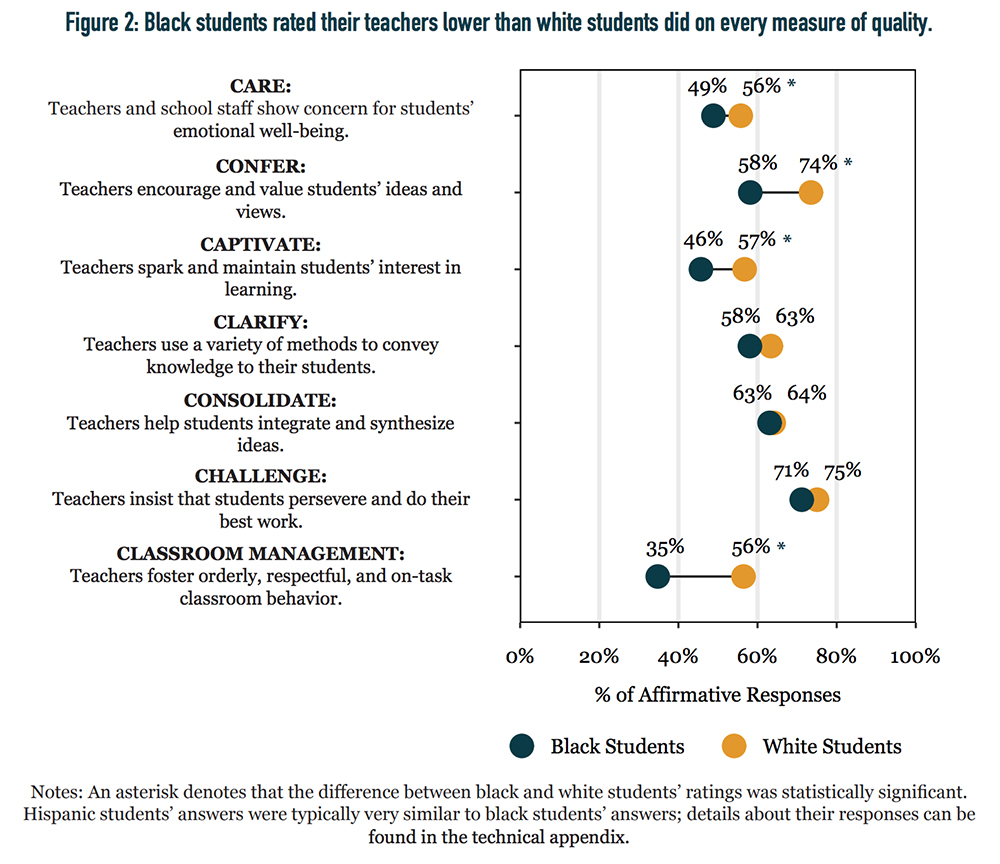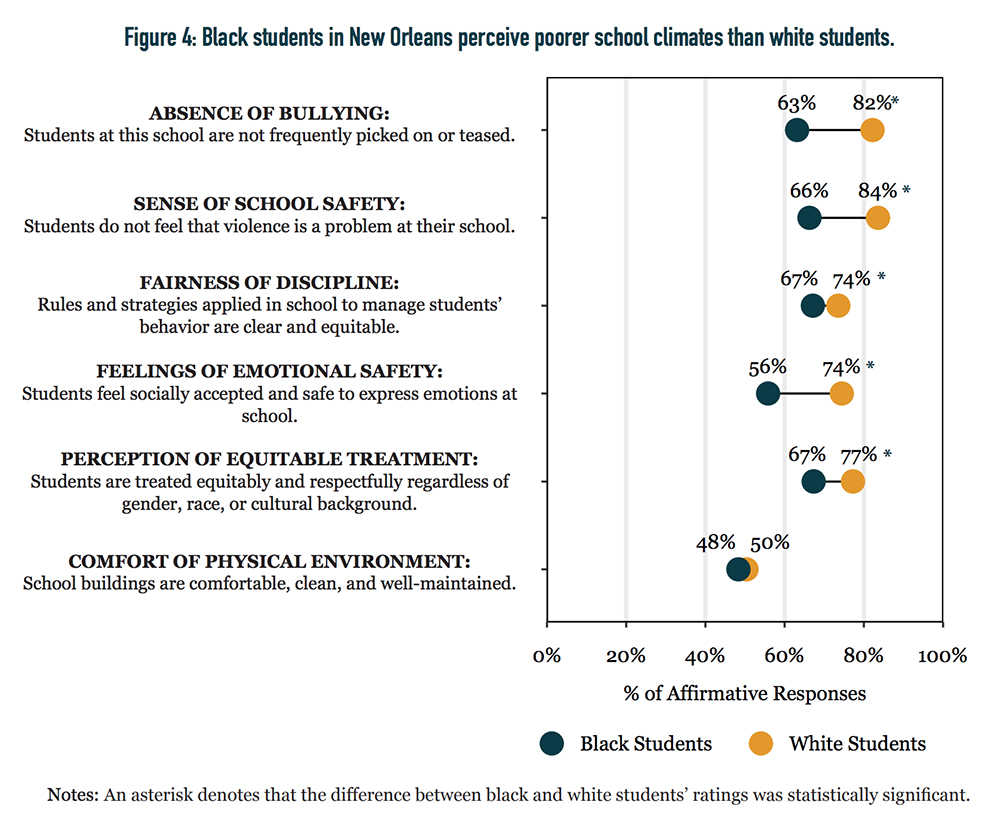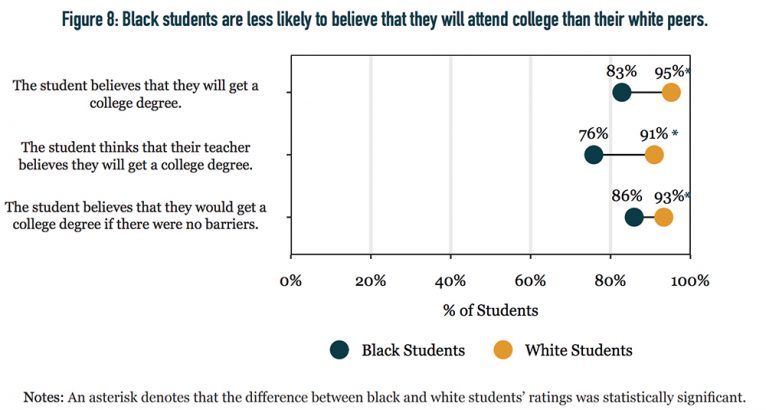74 Interview — A Racial Divide in How Kids View Police, Teachers & Neighborhoods: Researcher Lindsay Bell Weixler on the Sobering Findings of Her New Orleans Student Survey

See previous 74 Interviews: Author Jal Mehta on the value of teaching, journalist Paul Tough on class, race and the pursuit of college, Professor Rucker Johnson on how school integration helped black students and the full archive of 74 interviews.
In a moment replete with harsh truths about race and policing, researchers in New Orleans have found that fewer than half of students surveyed in the city’s public schools feel safer when police are around. Just 40 percent of black students say they feel safer in the presence of police, versus 69 percent of white students.
The divide in perceptions was confirmed by three scholars at the Tulane University-based Education Research Alliance for New Orleans, which has tracked education reform efforts begun in the wake of Hurricane Katrina. The first to measure youth perceptions, the survey found racial disparities in many aspects of students’ experiences.
The feelings reported about police are far more negative than students’ perceptions of their safety in their communities. Eighty-two percent of white students say they have not experienced discrimination and feel safe in their neighborhoods, while 72 percent of black students say they have not been victims of discrimination and 70 percent feel their neighborhood is safe.
Black students rated their teachers lower than white students on every measure of quality, with wide disparities in their perceptions of teachers’ classroom management skills and interest in students’ ideas and views. While 74 percent of white students say their teachers value their ideas and views, just 58 percent of black students agree. Thirty-five percent of black students say their teachers foster orderly classrooms, compared with 56 percent of their white peers.
Students of both races agreed on the importance of education, however, with 70 percent saying they value it, and 85 percent believing they will earn a college degree.
One of the researchers behind the report, Lindsay Bell Weixler, is an associate director at the alliance. She described the motivation behind the survey and highlighted a number of findings in a conversation with The 74. This interview has been edited for length and clarity.
The 74: Tell us why you undertook this research.
Lindsay Bell Weixler: This project came from a lot of questions and critiques that we’ve gotten for a long time from the community here. A lot of our research is based on administrative data; one of the things that’s easy to look at in administrative data are test scores. But we know that test scores only tell a small part of the story of students’ education and experiences in their schools.
In this report, we’re looking at three big domains of student’s experiences: their perceptions of their teachers; their experiences of their school climate; and their experiences in their neighborhoods.
Students across the board in New Orleans are rating their teachers lower in many domains than a national comparison group, which is concerning. I know that there are a lot of local groups focused on teacher workforce, teacher retention, teacher mobility issues.
A second big takeaway is the consistent racial disparities in the way that students answer these questions. On almost all measures of school climate that we included in the survey, white students are reporting more positive experiences and perceptions than their black peers are. Black students are reporting lower perceptions of their teachers’ quality.

Across the neighborhood experiences, we see racial disparities, too. Especially in light of recent events and protests, most notably we see a big gap in students’ feelings of safety in the presence of police. Sixty-nine percent of white students say they feel safer in the presence of police, but only 40 percent of black students.
We did ask students whether they felt safe in their neighborhoods, and those numbers were somewhat higher than I might have expected. We have 70 percent of black students saying they feel safe in their neighborhoods and 82 percent of white students reporting that. But then, very different numbers when talking about feelings of safety in the presence of police.
This is not in the main report, but we did also ask students if they feel safer in the presence of their school security guards, and we saw a similar, smaller racial gap in that. About half of black students said they feel safer in the presence of their school security guards.
Did student perceptions vary according to their schools’ academic quality?
In Louisiana, the state gives letter grades that range from A through F to reflect schools’ quality, primarily based on students’ test-scoring levels. They also incorporate some other measures, and at the high school level, some things like graduation rates. One of the things we did was look at the association between a school’s letter grade and the way that students answered the questions. We found very little association between the school letter grades and what students reported on these matters.
We know from a lot of anecdotal reports and research that high test scores don’t necessarily mean a supportive and comfortable and happy environment for students. This really was a call to the community to look more deeply at how schools are serving their students.
Some of your findings at first blush seem paradoxical. For instance, that students report both feeling very challenged and incredibly frustrated with classroom management.
That was not paradoxical to me, honestly. In New Orleans, we have a relatively young and inexperienced teacher workforce, and something that inexperienced teachers struggle with is classroom management.
I do think that alternative teaching pathways and more recent narratives in education have pushed the idea of challenging your students and having high expectations. That message seems like it’s gotten across. We have high rates of students feeling challenged and feeling like their teachers have high expectations. I think what we’re seeing is that it’s probably an easier thing to do as an inexperienced teacher to have high expectations — and harder to really know how to connect with students and implement those expectations.
What students need to see is more teachers who look like them, who have similar backgrounds, who can better understand their experiences and be better positioned to connect with them. It’s something that our community advisory board has asked us to do a follow-up project on, which we’re working on now — how the racial diversity of the teacher workforce relates to how students answered these questions.

There are also other possible explanations for the disparities, which could be the types of schools that students are in. We have a smaller group of schools that white students tend to enroll in in higher numbers. Those schools may have longer-standing administrations and less administrative and teacher turnover that may create stronger cultures.
I was surprised by the low numbers for social participation. Just 13 percent of students reported some level of religious, cultural or civic activity.
I don’t really have an explanation for that. That was one place where we saw the racial gap go in the other direction. Talking about what school climate is like and what teachers are like, that’s where we see white students answering more positively than black students. Here, we see the reverse. Black students were much more likely to say they participated in social groups and activities and provided some kind of service activity in their community.

One thing that really stood out to me is where we did not find racial disparities. In internal values like the value students placed on education, their growth mindset, or the belief that effort pays off, their aspirations for college, we really didn’t find racial disparities, where we did find them in the teacher and school domains. The story I took away from this is that black and white students in these schools have the same values on education, the same beliefs. They have the same goals for themselves, but there are systemic barriers that are in their way in achieving those goals.
Help fund stories like this. Donate now!

;)
